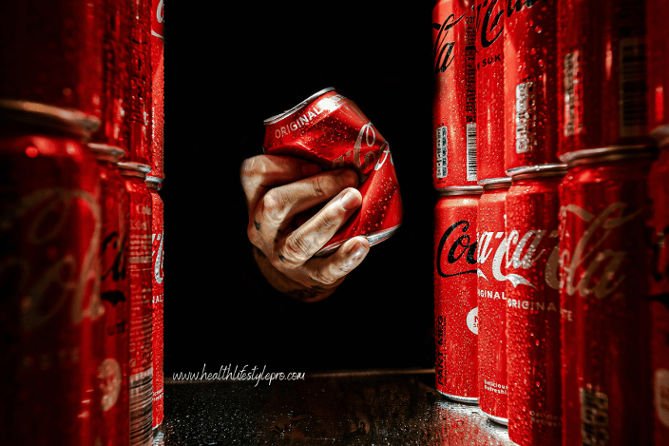To branch out into new drink categories, Coca-Cola energy drink announced on Friday that it will end its energy drink in North America. The product was introduced last year.
After being introduced in about 25 other nations, Coke Energy—which contains guarana extracts and B vitamins—was introduced in the US in January 2020. The drink contained more than three times as much caffeine as a typical can of Coke, and it also cost more.
When it was introduced, Coke offered a non-soda beverage for the first time under its recognizable main brand in the US.
Why does that exist?
According to research, individuals are willing to test energy drinks but are apprehensive to do so because they are buying unknown brands with unknown contents.
When it comes to choosing beverages to enjoy, taste is a major factor, particularly in a market with a wide variety. We know Coca-Cola lovers adore the taste of Coke… and, with Coca-Cola Energy, we identified a chance to extend Coca-Cola into a category many people haven’t experienced.
Ingredients:
| Ingredient |
|---|
| Carbonated Water |
| High Fructose Corn Syrup or Sugar |
| Caramel Color |
| Phosphoric Acid |
| Natural Flavors |
| Caffeine |
| Sodium Benzoate (Preservative) |
| Guarana Extract |
| B-Vitamins (Niacinamide, Vitamin B6) |
Coca-Cola Energy vs. Regular Coca-Cola:
Caffeine Content:
Coca-Cola Energy typically contains more caffeine compared to regular Coca-Cola. Energy drinks are formulated to provide an energy boost, so they often have higher caffeine levels.
Calories
Coca-Cola Energy may have a slightly higher calorie count compared to regular Coca-Cola due to added ingredients like guarana extract and B vitamins.
Ingredients
Coca-Cola Energy includes additional ingredients like guarana extract and B vitamins for energy enhancement, while regular Coca-Cola primarily consists of carbonated water, high fructose corn syrup or sugar, caramel color, phosphoric acid, natural flavors, and caffeine.
Taste and Flavor Profile
The taste of Coca-Cola Energy may have variations to incorporate the energy-boosting ingredients, potentially leading to a different flavor profile compared to the classic taste of regular Coca-Cola.
Intended Purpose
Coca-Cola Energy is designed as an energy drink, aiming to provide a quick energy boost, while regular Coca-Cola is a traditional carbonated soft drink meant for refreshment without the added energy-boosting elements.
Why, in your opinion, do people now want more caffeine?
More than ever, people are busy. They do not simply show up for work at 9 a.m. and leave. With all the activities they engage in after “work,” their lives are packed. Delicious energy is provided by Coke Energy to enable people to fulfill their needs as well as their desires.
Coca-Cola Energy should become even more appealing to a wider audience with the addition of two zero-calorie choices.
Indeed. Though zero-calorie options are largely responsible for the growth, full-calorie options still account for the majority of the energy category’s sales (around 80%). With our inclusive brand and zero-calorie options, we are sure that even more people will be drawn in.
Nutrition Facts (per 12 fl oz can):
| Nutrient | Amount |
|---|---|
| Calories | ~140 |
| Total Fat | 0g |
| Sodium | 40mg |
| Total Carbohydrates | 39g |
| – Sugars | 39g |
| Protein | 0g |
| Caffeine Content | ~114mg |
Why was Cherry chosen as a flavor expansion for Coca-Cola Energy?
Europe does not offer it.
Americans adore Cherry Coke! Here, the brand has almost become a cult. To introduce Coke drinkers to the energy category, what better way to achieve this than by introducing an expanded line of Coca-Cola Energy drinks that are based on the flavor that consumers love, trust, and recognize?
What can the brand’s capacity for innovation be told by Coke Orange Vanilla’s success, and how is the introduction of Coke Energy being informed by these lessons?
It demonstrates how the Coca-Cola brand can offer consumers delicious new tastes that they will enjoy, both with and without calories. Orange Vanilla Coke’s popularity serves as a wonderful reminder of how much consumers enjoy the Coca-Cola brand and the new products we are releasing. We are offering additional incentives to grab a Coke with Coca-Cola Energy. Coke Energy is a novel idea that will propel Coca-Cola to previously uncharted territory.
FAQs
- Does Coca-Cola have an energy drink?
Yes, Coca-Cola has an energy drink called Coca-Cola Energy, but availability may vary by region.
2. Is the Coke energy drink discontinued?
Recent information suggests that Coca-Cola Energy will be discontinued in North America by the end of 2021.
3. Is Coca-Cola healthier than energy drinks?
Coca-Cola and energy drinks have added sugars and caffeine; the health impact depends on individual preferences and dietary needs.
4. Can kids drink Red Bull?
Children are generally advised against consuming energy drinks like Red Bull due to their high caffeine and sugar content.
Conclusion
In summary, Coca-Cola Energy faced a relatively short-lived presence in the North American market, with discontinuation signaling the company’s adaptability to evolving consumer demands. This decision underscores the competitive landscape in the beverage industry, where companies must carefully assess and adjust their product portfolios to stay in tune with market trends.

I’m a seasoned content creator with 6+ years of experience crafting engaging, SEO-optimized content that drives traffic and rankings. I excel in keyword research, link building, and guest posting, ensuring your brand reaches new heights.

